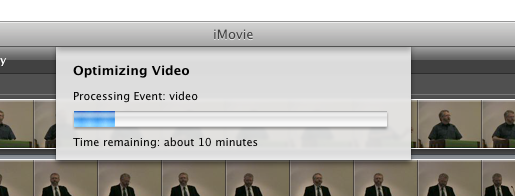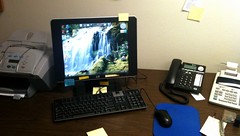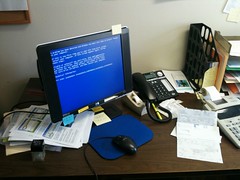Nuance recently released Dragon 2.0, an update to what was formerly called MacSpeech Dictate. I’ve been using MacSpeech Dictate for nearly two years, and I’ve been pleased with it.
Apart from the new branding, Dragon 2.0 has what seems to be a pretty thin list of new features. I’d say it’s more of a version 1.6 than a 2.0. (Although 1.5 was really a 1.1, so maybe they just count by 0.5 at Nuance.) For example, the new version is “powered by the latest version of the state-of-the-art Dragon speech recognition engine.” That’s not a feature. That’s plumbing and I don’t care. They could make me care by telling me that accuracy is 50% more accurate, or whatever, but they don’t.
The upgrade cost was $50, but I bit. (I actually have two licenses: one for my laptop and one for the iMac at home; I only upgraded one.) Here are some initial observations:
It’s not obviously better or worse than Dictate 1.5 was. If there’s a big improvement somewhere, I haven’t run across it.
But it is far more eager to hear something than it used to be. Whenever I take a breath, it hears “a” or “an” or “I” or “in.” This is hardly “improved speech recognition.” I wish there was some way to tell it not to try so hard. How do you train silence?
One thing is driving me crazy. Traditionally, if you want to un-say something, you say “forget that” or “scratch that.” (Maybe you stuttered or lost your train of thought, or maybe you’re just to lazy to train a word or whatever.) The documentation — never a strong suite with this product — still says that’s what you’re supposed to do. Umm, no. That feature appears to be gone. Inexplicably.
The UI is still a mess. It won’t let you stash it away in a Spaces space; it follows you around everywhere and gets in front of whatever you’re trying to do. They assume that the solution to that problem is to use creepy transparent windows so you can see what it’s obscuring. The result is that you still can’t see what you’re doing, but it’s also hard to see what Dragon is doing too. You can’t make the transparent windows completely opaque, and you can’t increase the font size in them to make it easier to read. I assume someone at Nuance is really invested in this UI, but I can’t imagine a real user liking it.
While I’d been hoping for improvements (e.g., those in my earlier review) this is how it’s always been. But they broke one thing. I always set the recognition window to stay visible, so I can pick from among alternative hearings. Now now there’s a bug that makes it go away when you pick one of them. So you have to re-enable the recognition window. Fail.
That’s what I think after playing with the product for an hour. This release hasn’t been a huge disappointment, but it has definitely been disappointing. I hope 2.01 will be better — even if they call it 2.5 and charge $50 for the upgrade. And in the meantime, I certainly won’t be upgrading the copy on my iMac.


